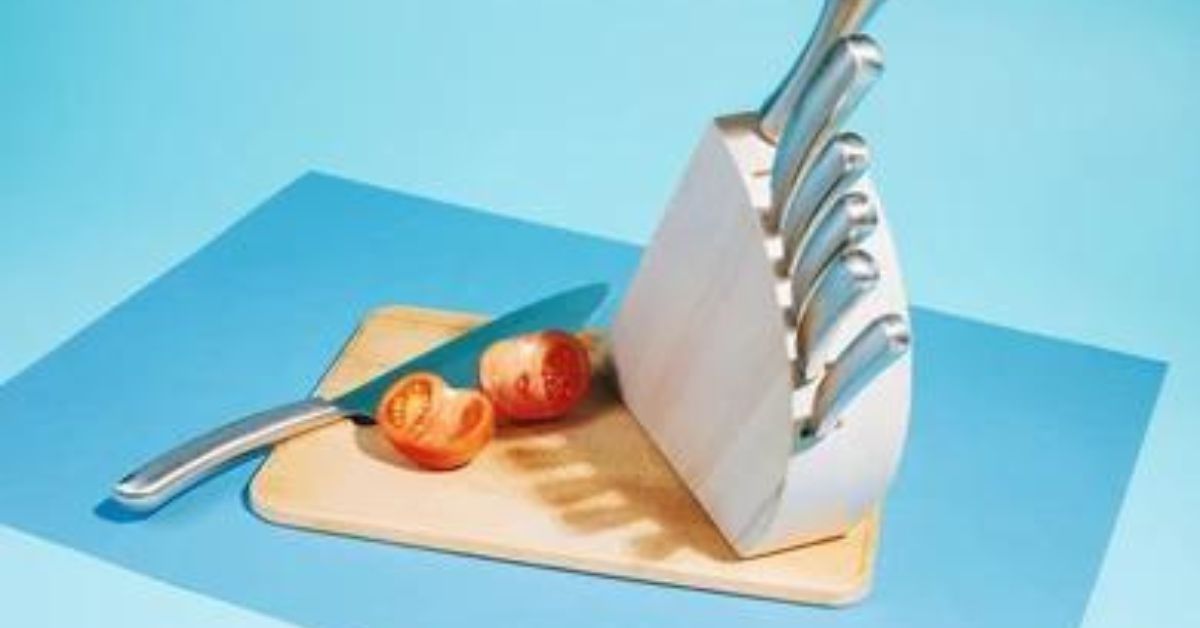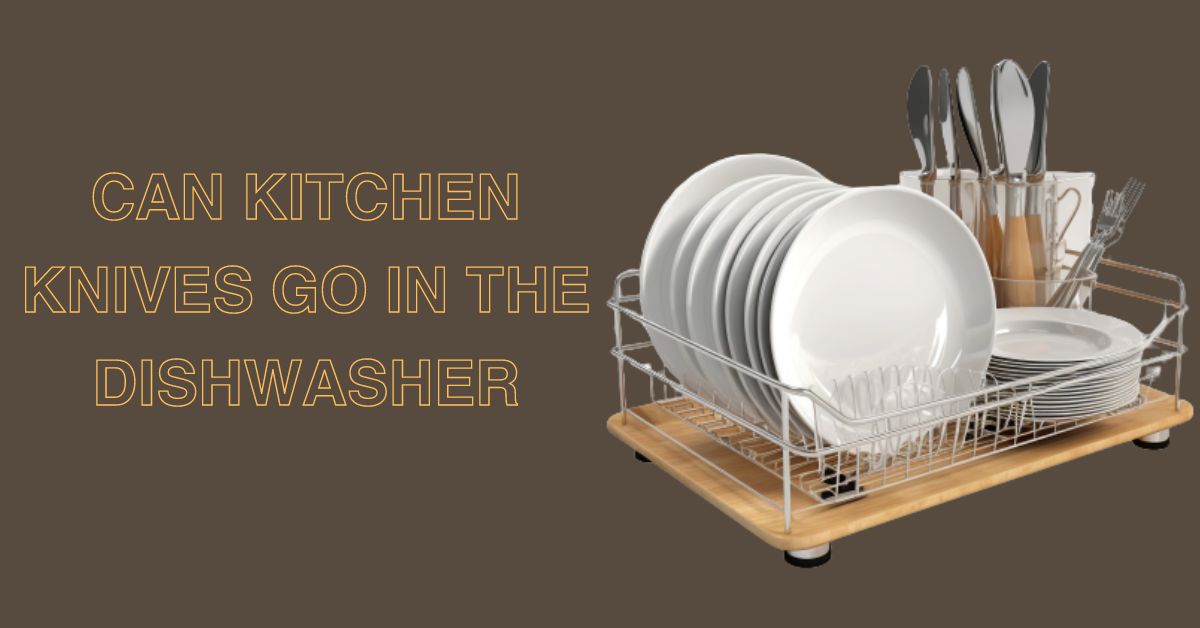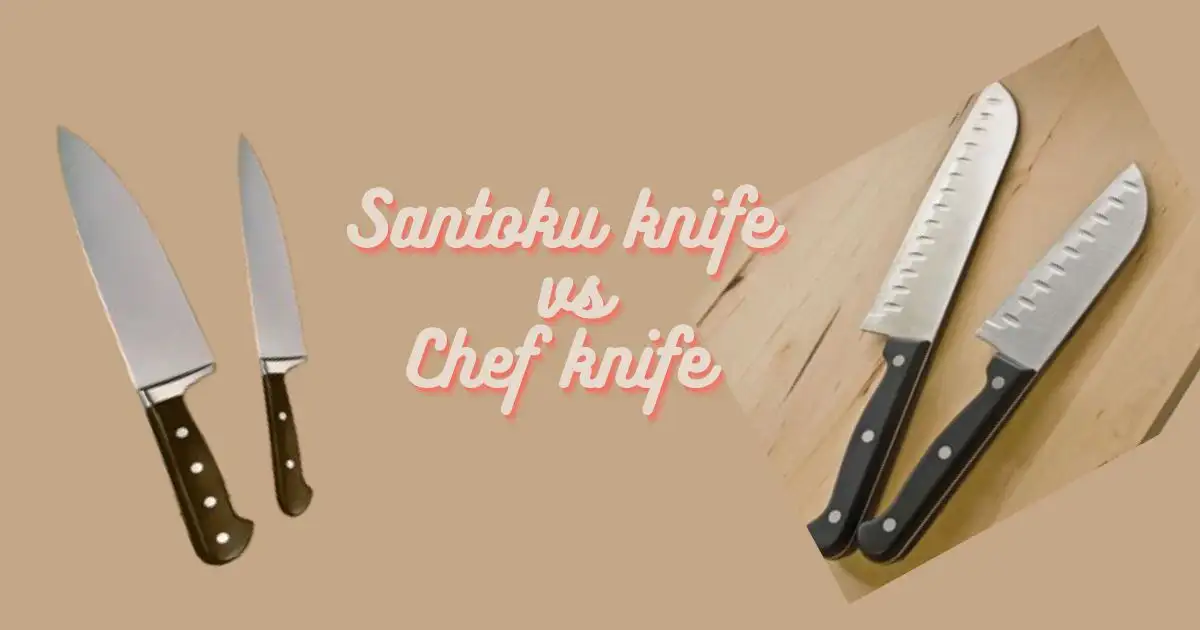Top Tips of 2023: Can Kitchen Knives Go to the Dishwasher
Table of Contents
ToggleIntroduction
Kitchen knives play an important role in their culinary skills because kitchen knives are useful for every task in the kitchen, like chopping, dicing, slicing, etc. However, when it comes to cleaning these cherished blades, a debate arises: Can kitchen knives go in the dishwasher? This question has sparked countless discussions among cooks and knife enthusiasts. On one hand, the dishwasher proposes suitability, saving valuable time in a full kitchen. In this blog post, we’ll see the pros, and cons of setting kitchen knives in the dishwasher, make available the best live-out for those who pick them out this way, and talk over the other processes of hand washing and drying.
Pros of Putting Kitchen Knives in the Dishwasher

- Convenience:
- The most apparent advantage of using the dishwasher for knife cleaning is the convenience it offers. You can simply place the knives in the dishwasher, start the cycle, and move on to other tasks, saving you valuable time in a busy kitchen.
- Reduced Effort:
- Dishwashers are designed to handle the laborious task of washing dishes, including knives. Using a dishwasher eliminates the need for hand scrubbing and washing, making the cleanup process more effortless.
- Sanitization:
- Dishwashers use high water temperatures and detergents, which can help sanitize the knives, killing bacteria and pathogens.
- Safety:
- Hand washing knives can be a risky endeavor, especially when dealing with sharp blades. Using the dishwasher reduces the chances of accidents related to knife handling during hand washing.
- Suitable for Some Knives:
- While not recommended for all knives, some knife types and materials can better withstand the dishwasher environment. For example, knives with stainless steel blades and synthetic handles are more dishwasher-friendly.
Cons of Putting Kitchen Knives in the Dishwasher
Certainly, here are some of the cons of putting kitchen knives in the dishwasher:
- Dulling of the Blade:
- One of the greatest problems of dishwasher use is the possibility for the knife’s blade to become cloudy over time.
- Risk of Blade Damage:
- The dishwasher’s racks and utensil caddy may not hold knives securely. Knives can move around during the wash cycle which can cause chipping, bending, or damaging the blade.
- Handle Damage:
- The high temperatures and humidity inside the dishwasher can cause handles to crack, warp, or become loose. This can impact the overall integrity and safety of the knife.
Best Practices for Dishwasher Use

- Avoid Overcrowding:
- Ensure that you don’t overcrowd the dishwasher rack. Passable space between tools and knives prevents them from near-term interaction with each other. An overcrowded dishwasher can lead to blades touching and potentially getting damaged.
- Use a Rinse Aid:
- Add a rinse aid to your dishwasher to prevent water spots and help with the drying process. This can help keep knives looking their best and prevent potential corrosion.
- Immediate Drying:
- As soon as the dishwasher cycle is complete, remove the knives and hand-dry them immediately with a clean, dry towel. Drying your knives right away prevents prolonged exposure to moisture, which can lead to corrosion and rust.
- Check for Loose Handles:
- After dishwasher use, inspect the knife handles for any signs of damage or loosening. If you notice any issues, take the necessary steps to repair or replace the handle to maintain the knife’s integrity.
- Regular Maintenance:
- Regularly inspect your knives for any signs of dullness, damage, or corrosion. Sharpen or hone the blades as needed, and address any issues promptly to ensure the longevity and performance of your knives.
Step-by-step essential factors for maintaining kitchen knives
- Honing:
- Regular honing with a honing rod helps maintain the edge of your knife. Honing realigns the microscopic teeth of the blade, keeping it sharp for longer. Perform honing before each use for the best results.
- Sharpening:
- Over time, even well-maintained knives will require sharpening. Invest in a high-quality sharpening stone or a knife sharpener to keep your blades sharp and effective. The frequency of sharpening depends on your knife’s usage and the type of steel.
- Cleaning:
- After each use, clean your knives by hand using mild dishwashing detergent and lukewarm water. Avoid harsh cleaners, as they can damage the blade and handle. Dry the knives immediately with a clean, dry towel to prevent moisture-related issues.
- Safe Storage:
- Store your knives safely to protect the blades and prevent accidents. Consider using a knife block, magnetic strip, blade guards, or blade sheaths. Make sure that the knives are deposited steadily, away from the spread of children.
- Handle Care:
- Form the handles regularly for any symbols of harm, such as extreme or loose. Address and handle issues promptly to maintain the knife’s integrity.
- Avoid Cutting on Hard Surfaces:
- Avoid using your knives on hard surfaces like glass or ceramic cutting boards, as this can damage the blade. Opt for softer cutting surfaces, like wooden or plastic cutting boards.
- Use knife for specific tasks:
- Select the appropriate knife for the specific task you’re performing. Using the right knife minimizes the risk of damage to the blade and ensures precision in your cutting.
Crucial Recommendations For Safe and Effective Knife Storage

- Knife Block:
A knife block is a popular and practical option for storing knives. It keeps the blades protected and accessible. Choose a block with slots that accommodate various knife sizes and shapes.
- Magnetic Strip:
A magnetic strip mounted on your kitchen wall or inside a cabinet is a space-saving and visually appealing choice. It allows you to display your knives for easy access while keeping them securely in place.
- Drawer Inserts:
Drawer inserts or knife trays are designed to fit into kitchen drawers. They have slots or compartments to organize and protect your knives. Make sure the slots are wide enough to accommodate the width of your largest knife.
- Knife Rolls or Bags:
Knife rolls or bags are a portable and protective storage option, ideal for chefs on the go. These provide individual pockets for each knife, ensuring they remain secure and safe during transport.
- Separate Storage for Specialty Knives:
Store speciality knives separately or in designated slots to prevent damage and keep them easily accessible. This includes knives like bread knives, cleavers, or santokus.
Conclusion
The debate over whether kitchen knives can go in the dishwasher has shed light on the importance of proper knife care and maintenance. In the world of culinary tools, knives are cherished companions that deserve our attention and care to ensure their longevity, sharpness, and safety. While the dishwasher offers convenience, it comes with the risk of damaging the knives’ blades, handles, and overall performance. In this guide, we discuss each step briefly about dishwasher use. It’s necessary to follow maintenance practices, such as honing and sharpening, that keep your knives in good condition. If you pay the full attention and care that they deserve, you can save their knives for many years.
FAQ
1:Can I safely wash my kitchen knives in the dishwasher?
It is generally not recommended to save your knives in the dishwasher because high heat bad detergents can harm the blades and edges of knives. Additionally, high pressure from water can damage the handles of knives.
2: How often should I sharpen my kitchen knives?
Answer: The frequency of knife sharpening depends on usage. In general, knives may require sharpening every few months to a year. However, it’s good practice to hone your knife with a honing rod before each use to maintain the edge. Regular honing can extend the time between sharpenings.
3: Can I use sharpening steel for all types of knives?
Answer: Sharpening steels are suitable for honing and maintaining the edge of most kitchen knives. However, sharpening stone is the best for blade sharpening, dull edges etc. Because it is designed for a specific type of knife.
4: How can I save my knives from rusting?
Answer: To prevent rust on knives, particularly carbon steel blades, it’s essential to clean and dry them immediately after use. Apply a thin layer of food-grade mineral oil to the blade, store the knives in a dry and ventilated area, and avoid prolonged exposure to moisture or acidic ingredients.
5: Are all knife storage options equally effective?
Answer: No, different knife storage options have their advantages. Knife blocks, magnetic strips, and in-drawer inserts are effective choices, but their suitability depends on your kitchen space and personal preferences. Whichever option you choose, it’s essential to store knives in a way that prevents blade damage and accidental injuries




